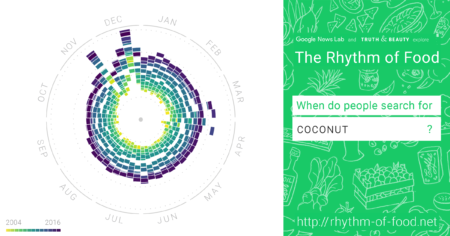- Identification of zucchini varieties in commercial food products by DNA typing. You can trace zucchini varieties in food products despite various kinds of processing.
- Anaerobic microorganisms in astrobiological analogue environments: from field site to culture collection. Practicing to collect genetic resources on Mars.
- Genetic diversity and population structure in the narrow endemic Chinese walnut Juglans hopeiensis Hu: implications for conservation. It’s in trouble.
- Do traditional sheep breeders perform conscious selection? An example from a participatory breeding program of Morada Nova sheep. Breeders of purebreds use different criteria to those of crossbreds.
- Characterization of common bean wild populations for their in situ conservation in Northwestern Argentina. Some populations should be conserved because they’re pure wild, the rest because they’re not pure wild.
- Quality Management System for Research Biobanks: a Tool to Incentivize Public-Private Partnerships. ISO developing a QMS specifically for biobanks. Full text in Google Books.
- Cryopreservation of fruit germplasm. Elements of a strategy for Germany.
- Implications of Seed Policies for On-Farm Agro-Biodiversity in Ethiopia and Uganda. 117 provisions in 21 national seed policies in coded for implications for availability and accessibility of improved, quality-controlled and genetically diverse local seed in both the formal and informal seed systems. Ok, now what?
- Measuring the financial sustainability of vine landraces for better conservation programmes of Mediterranean agro-biodiversity. Landraces are not worth it, because of low yields.
- Traditional People, Collectors of Diversity. ‘Nuff said.
- Changes in human skull morphology across the agricultural transition are consistent with softer diets in preindustrial farming groups. Cheese changed your skull shape.
New uses for the old orange
I just can’t resist following up yesterday’s Nibble on the history of citrus fruits in the Mediterranean with a couple of recent news stories about unconventional uses for orange peels. To wit, making clothes and environmental restoration. What would those Romans who first introduced the citron and lemon have thought? Let’s just hope we’re able to enjoy this multi-use genus a little while longer.
Calvin Lamborn, plant breeder

It isn’t that people don’t want to know who bred their favourite fruit and vegetable varieties, it’s just that the story of those breeders is so seldom put before us. A tribute post from @culinarybreedingnetwork alerted me to the death of Calvin Lamborn. And who is he? Only the man who gave the world Sugar Snap peas, and many other wonderful peas.
Jim Myers, no slouch as a plant breeder himself, had this to say:
Calvin is the reason why we have snap peas as a part of our everyday cuisine in the U.S and in much of the world. Most people think that snap peas have always been part of our food culture, but before Calvin’s work, snap peas were only a very minor curiosity in the garden. When he went to work at Gallatin Valley Seed Company in Twin Falls Idaho as a young plant breeder, he was given the problem of “straightening out” edible podded snow peas. He wondered what would happen if he crossed a spontaneously occurring trait for thick pod walls in the old shelling pea ‘Dark Skin Perfection’ with ‘Mammoth Melting Sugar’ snow pea. The result was completely unexpected; it did straighten the pods, but it was a completely different crop. The first variety from those breeding efforts was ‘Sugar Snap’ pea and he is responsible for releasing most of the snap pea varieties that we enjoy today. Equally critical, snap peas would remain a minor curiosity today if not for his continuous and tireless promotion of the crop. What I have learned from Calvin is that if you are trying to introduce a new crop, it is not enough to just breed improved versions. One must get it in front of the world to let others understand the novelty and benefits that the crop can bring.
Edible Manhattan has featured Calvin Lamborn, as has Civil Eats — and if you’re really keen, there’s a three-part webinar on YouTube in which Jim Myers talks about “Putting the snap back in snap peas.”
I hope Culinary Breeding Network doesn’t mind me using their image.
When do people search for coconut?
Or any other food, for that matter, at least in the US. Well, now there’s The Rhythm of Food for all the answers, in nice visualizations to boot.

And if anyone knows why Americans do more searching for coconut during the winter holidays, and then again in spring, do tell us.
Brainfood: Temperate maize, Pre-Neolithic Revolution, Social media, European maize
- Genomic estimation of complex traits reveals ancient maize adaptation to temperate North America. “The diversity needed for high altitudes was there, but getting it in the right combination took 2,000 years,” says ancient maize DNA.
- The deep human prehistory of global tropical forests and its relevance for modern conservation. There were “garden cities” in the tropical forests of equatorial Africa, South Asia, and Southeast Asia starting 45,000 years ago.
- An Introduction to Social Media for Scientists. Choose wisely.
- Is there an optimum level of diversity in utilization of genetic resources? It depends.